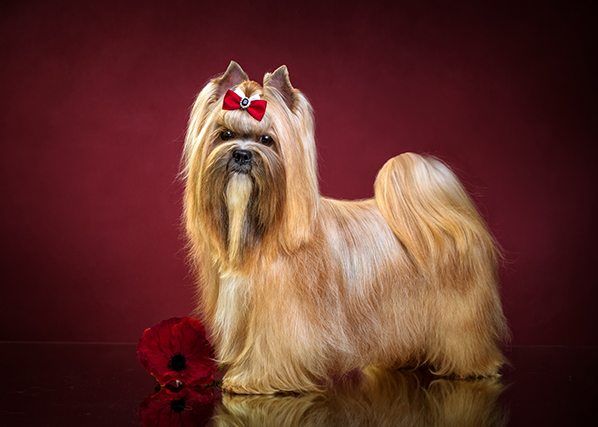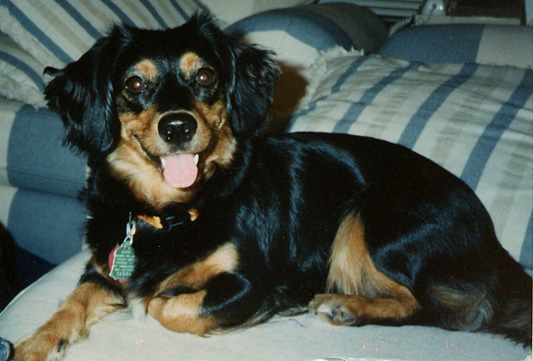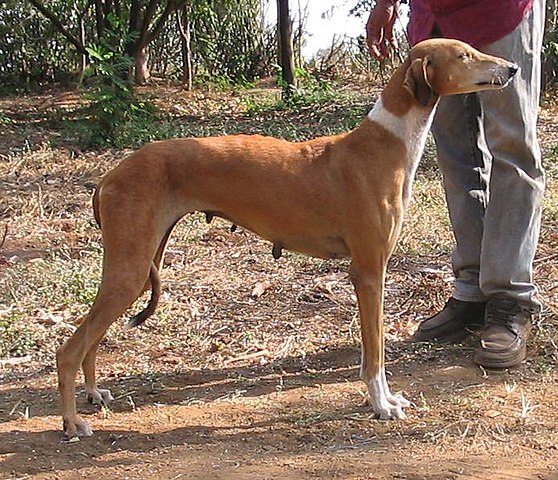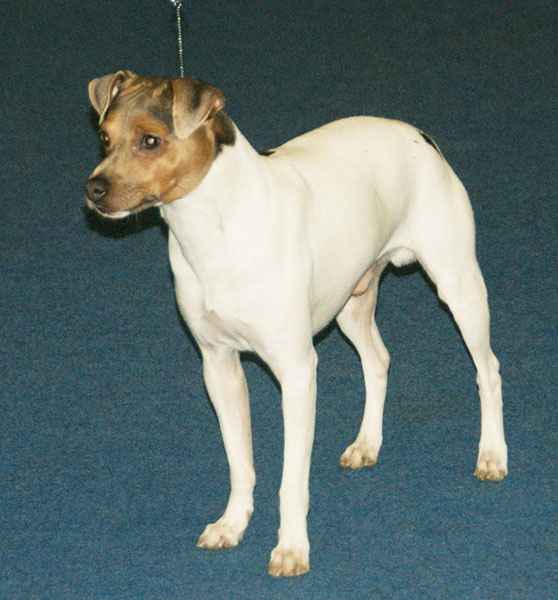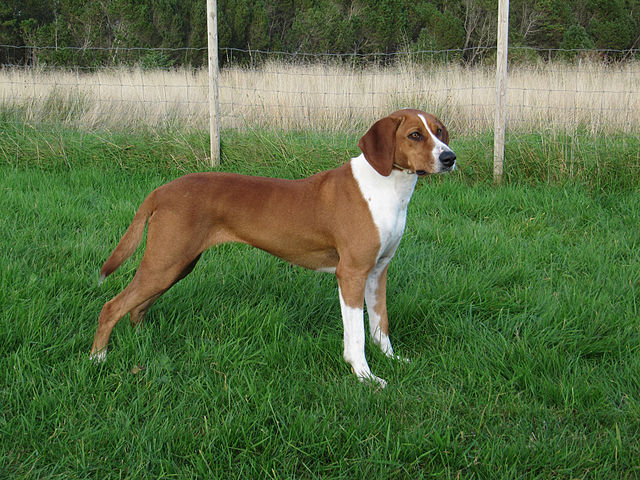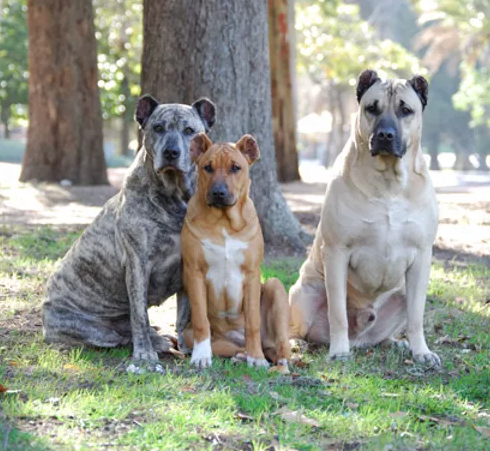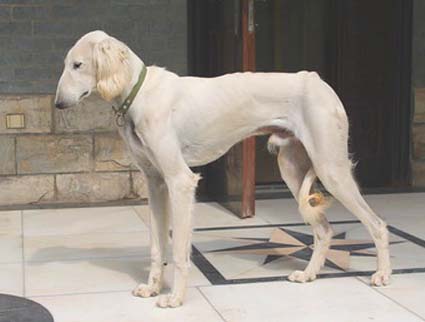The Podenco Andaluz is a warren hound AKA a pondenco, which roughly translates to a Mediterranean rabbit hunting breed. Also known as the Andalusian Hound, this is one of several podenco breeds developed in Spain. An ancient breed, he is categorized as a primitive hunting dog by some and as a sighthound by others. The breed is recognized by the Real Sociedad Canina de Espana in Spain, as well as in Germany, although is virtually unknown in America. Because he shares so many similarities to the Portuguese Podenco, the FCI does not recognize him as a distinct breed at this time although clearly several countries disagree with this decision.
The Andaluz comes in three distinct sizes: small, medium and large. While all varieties were used for hunting by sight, smell and sound; the largest variety was normally put to work tracking and flushing out prey in order to kill it and return it to their master (together in packs with Greyhounds). They were also used for watchdog duties. The smallest variety served double-duty both hunting and ridding the home of rats. In addition to several sizes, the breed also can appear in three different coats (shorthaired, wirehaired and longhaired), and a few different colors (white, cinnamon, or a combination of white and cinnamon).
The Podenco Andaluz is affectionate and loyal to his family, and tends to have a larger-than-life personality while still remaining gentle. All varieties also do well with children if raised with them, although the largest variety may be a bit too exuberant for young toddlers. This is a happy-go-lucky breed that enjoys playing just as much as he loves getting into trouble – his curious nature can lead him into various shenanigans throughout his life! 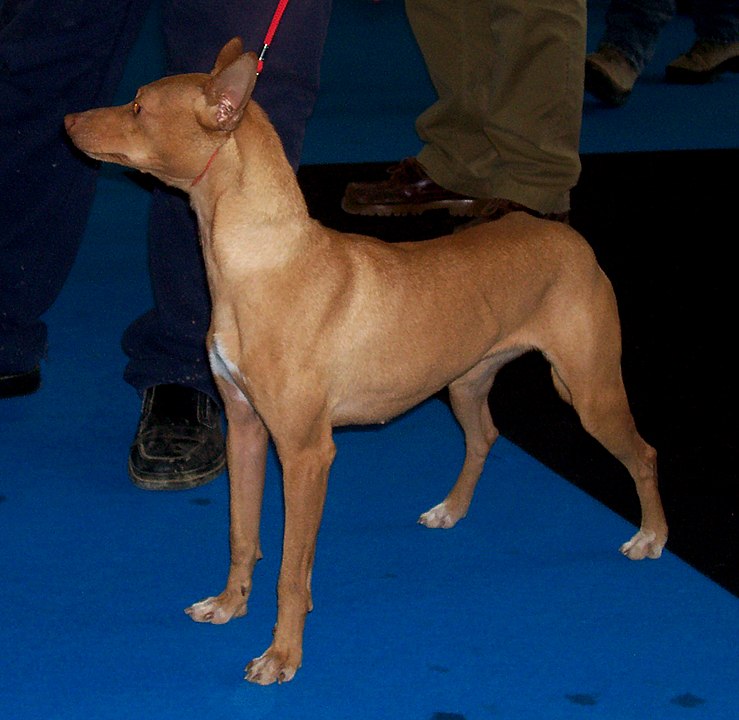
Andaluz are intelligent, quick-learners and enjoy pleasing their owners – all traits that make them surprisingly good obedience prospects. In fact, they need a job to do and without one can develop behavioral issues, which makes training a definite necessity! Agility, disc dog and obedience can all fulfill this need, as can other enriching dog sports. Some hounds can be bossy in nature so household rules should be started early and enforced. Sensitive and gentle beasts – they will shut down with harsh behavior so while training should be firm it should never be abusive. As with other sighthounds, they have high prey drives and tend to chase small animals when given the chance, which means one must work extra hard at enforcing off-leash commands and otherwise keep them in fenced areas until and unless the hound becomes trustworthy (if ever).
The Podenco Andaluz requires daily exercise in the form of regular walking and supplemental time to run in a safe, fenced area. He has plenty of stamina and energy, and can be a fantastic jogging partner as long as he is kept on leash! Without adequate exercise he can become destructive at home. As he was developed to hunt in hot, dry conditions; he does best in these temperatures although can live in most any climate. With proper care, the average lifespan is 11-12 years.
Podenco Andaluz can live in apartments or smaller spaces but only as long as they are given enough exercise – this is a high-energy breed after all! The smaller varieties are a little easier to manage in this type of lifestyle. Whatever the size of the living space, however, the breed is highly alert at home and can be an excellent watchdog. This said, he is a naturally submissive hound that isn’t likely to attack unless push comes to shove. He isn’t fond of strangers and can be skittish or nervous around them – particularly if his owner isn’t around.

